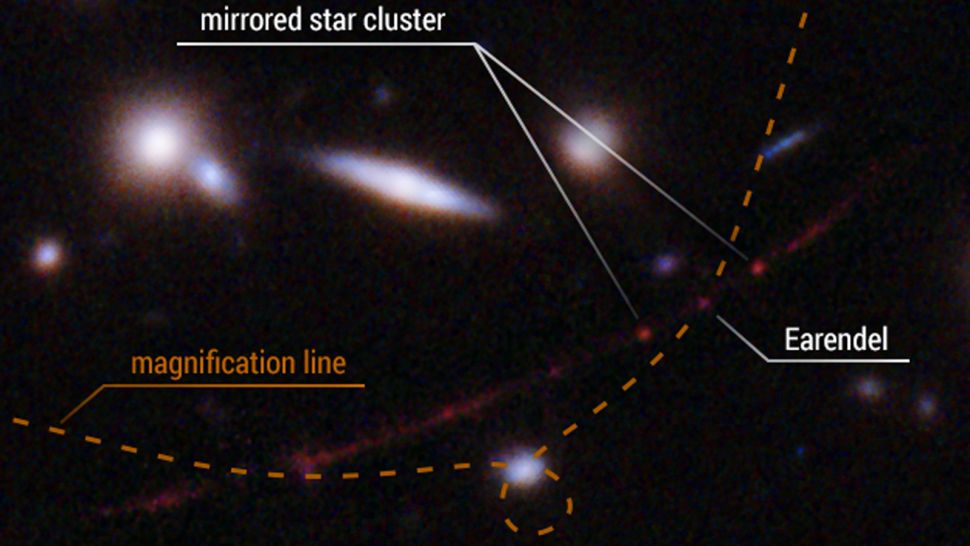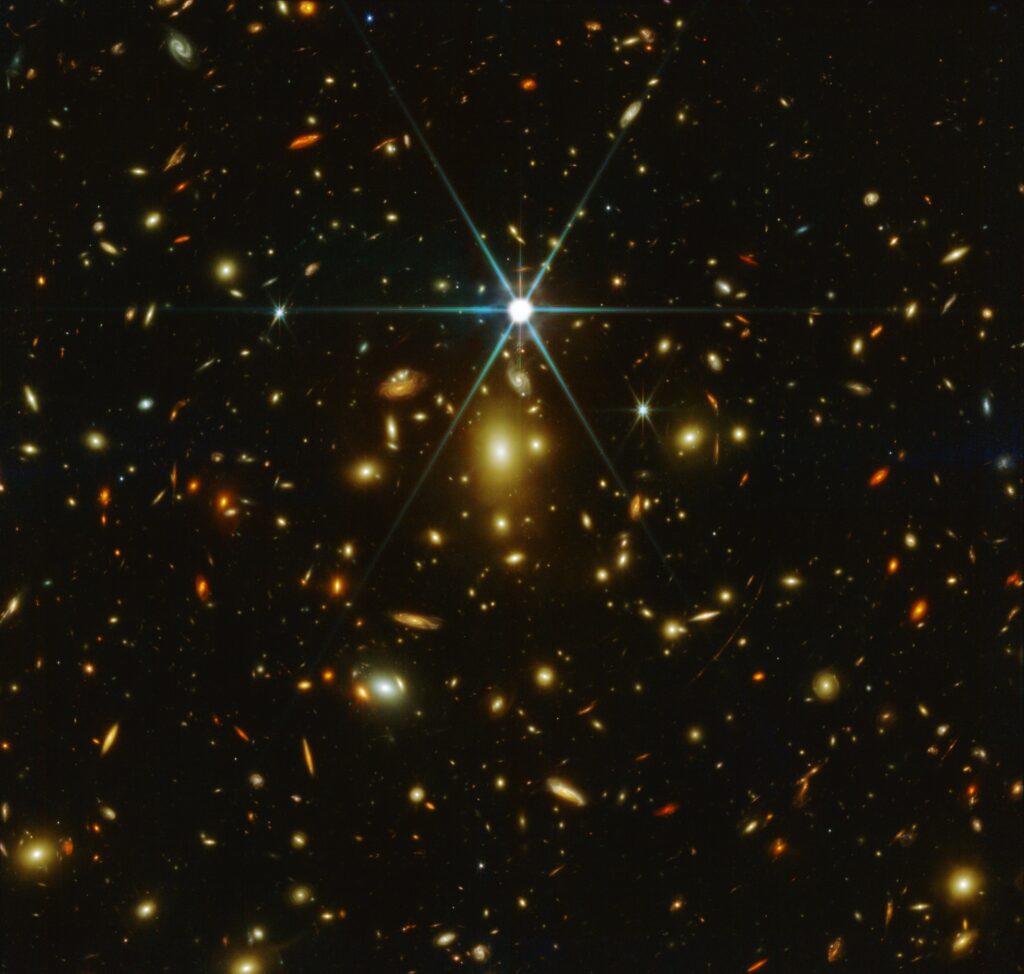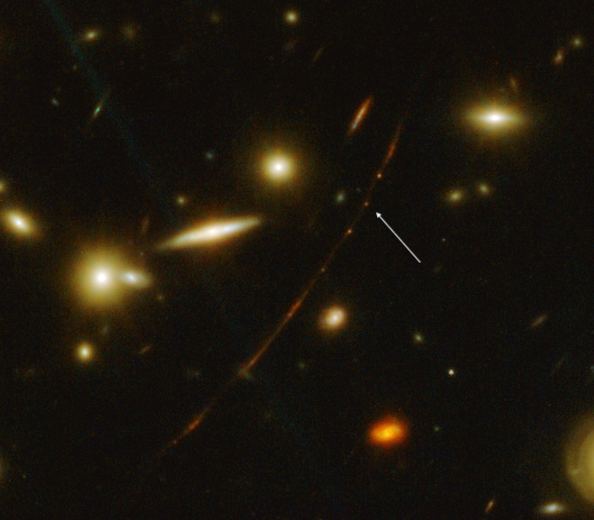The James Webb Space Telescope (JWST) photographed the star WHL0137-LS, also known as Earendel (translated from Old English — “morning star”/”shining light”). To date, this is the farthest known luminary in the Universe. The light it emitted took 12.9 billion years to reach our planet.
The most distant star in the Universe
Earendel was first identified in the spring of this year in images taken by the Hubble Observatory. According to astronomers, its mass exceeded the mass of the Sun by 50 — 100 times. Of course, the star died long ago (such luminaries live only a few million years), turning into a supernova, and its matter subsequently became part of other stars and planets.

It is worth noting that under normal circumstances, none of the existing telescopes would ever have been able to see Earendel. If we take into account the expansion factor of the Universe, the star is located at a distance of 28 billion light-years from Earth. Fortunately for astronomers, a massive galaxy cluster WHL0137-08 is located on the line between Earendel and the Earth. Its gravity served as a lens, magnifying the light of a distant star a thousand times.
James Webb Photo
On July 30, JWST conducted a survey of the gravitational lens created by the WHL0137-08 cluster. It also managed to capture a red dot corresponding to the Earendel. Analysis of the image has already confirmed that this is indeed a single star, and not a group of several luminaries.

The staff of the JWST mission promised to present more detailed results of studying the star in the near future. Astronomers are particularly interested in its chemical composition. Earendel was formed before the Universe was filled with heavy elements. If the analysis shows that the Earendel consists only of primary hydrogen and helium, it will become the first known luminary of the so-called population III, which includes the very first stars in the Universe that formed immediately after the Big Bang.

You can also look at the JWST photo of the Cartwheel galaxy.
According to https://www.space.com
Follow us on Twitter to get the most interesting space news in time
https://twitter.com/ust_magazine

